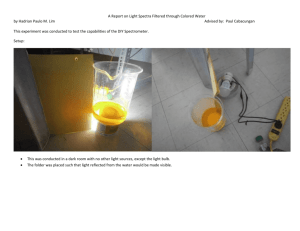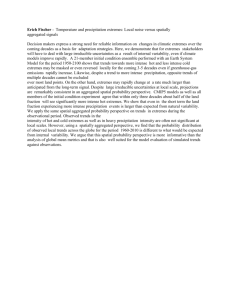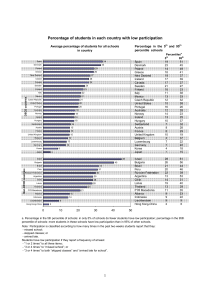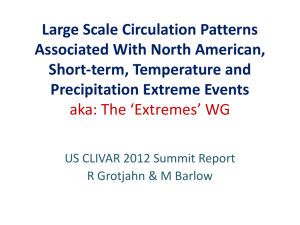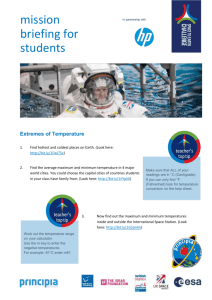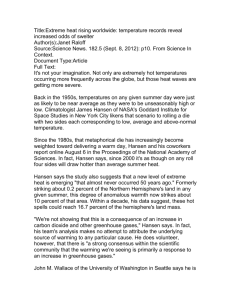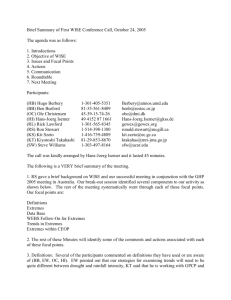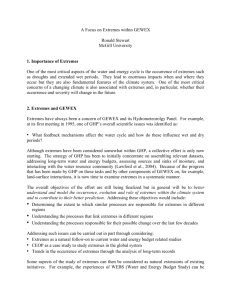S2 Time-filtered heat transport
advertisement
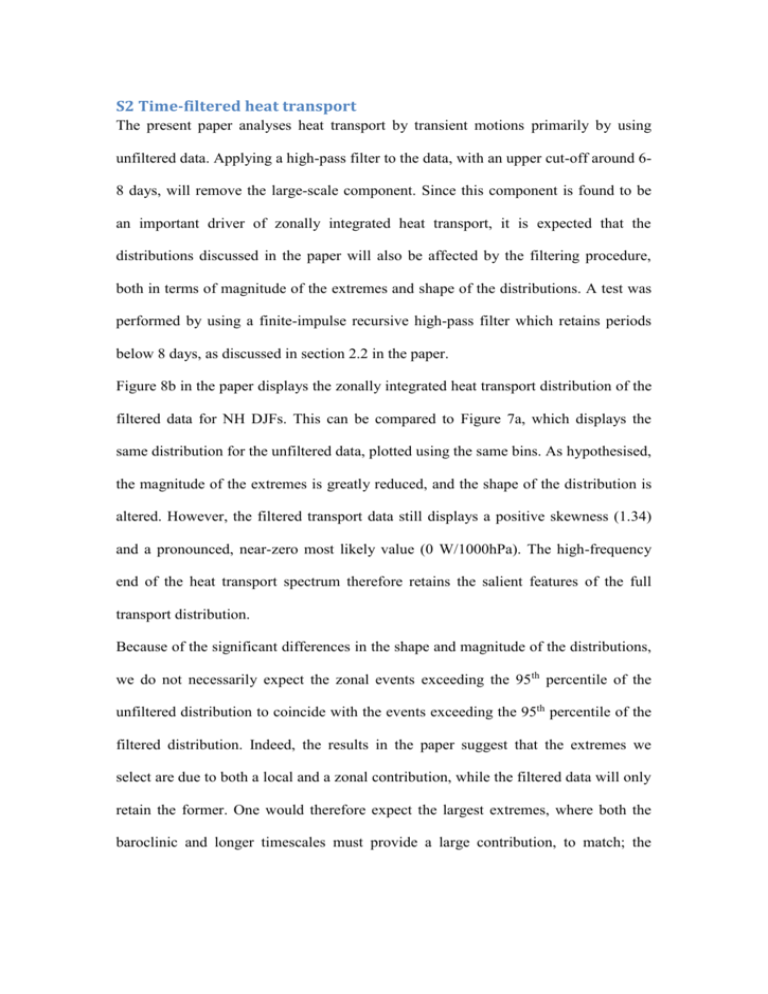
S2 Time-filtered heat transport The present paper analyses heat transport by transient motions primarily by using unfiltered data. Applying a high-pass filter to the data, with an upper cut-off around 68 days, will remove the large-scale component. Since this component is found to be an important driver of zonally integrated heat transport, it is expected that the distributions discussed in the paper will also be affected by the filtering procedure, both in terms of magnitude of the extremes and shape of the distributions. A test was performed by using a finite-impulse recursive high-pass filter which retains periods below 8 days, as discussed in section 2.2 in the paper. Figure 8b in the paper displays the zonally integrated heat transport distribution of the filtered data for NH DJFs. This can be compared to Figure 7a, which displays the same distribution for the unfiltered data, plotted using the same bins. As hypothesised, the magnitude of the extremes is greatly reduced, and the shape of the distribution is altered. However, the filtered transport data still displays a positive skewness (1.34) and a pronounced, near-zero most likely value (0 W/1000hPa). The high-frequency end of the heat transport spectrum therefore retains the salient features of the full transport distribution. Because of the significant differences in the shape and magnitude of the distributions, we do not necessarily expect the zonal events exceeding the 95th percentile of the unfiltered distribution to coincide with the events exceeding the 95th percentile of the filtered distribution. Indeed, the results in the paper suggest that the extremes we select are due to both a local and a zonal contribution, while the filtered data will only retain the former. One would therefore expect the largest extremes, where both the baroclinic and longer timescales must provide a large contribution, to match; the extremes which are closer to the 95th percentile threshold will display a looser correspondence. Figure S1: Composite pressure versus longitude v’ and H’ sign combination colourmap for extreme events. The colour bar shows the sign combinations corresponding to the different colours. The data cover NH DJFs from December 1989 to February 2011. All latitude circles between 30° and 89°N are taken into account. The continuous black contours mark regions where 30%, 40%, 50% and 60% of extreme events share the same sign combination. The diagonal striping marks regions of equatorward transport. Figure S2: Composite pressure versus longitude composite covariance map for meridional heat transport extreme events. The data cover the same range as in Figure S1. Darker (redder) colours correspond to larger (more positive) covariance values. The covariance is normalised relative to the maximum. The diagonal striping marks regions of equatorward transport. Note that the colour bar is not symmetric about zero.

